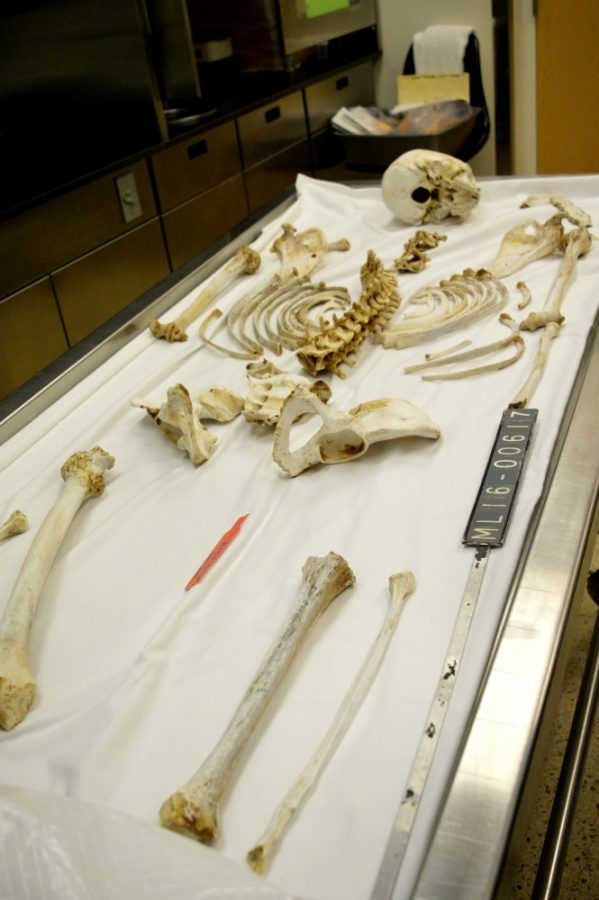A UA associate professor of anthropology recently published a study linking ancient atypical burials found through excavations to blood feuds in the past.
James Watson, who is also the associate curator of bioarchaeology and associate director of the Arizona State Museum, worked on the study with Danielle Phelps, a PhD candidate in the School of Anthropology studying egyptology. The study was published in the journal Current Anthropology.
Watson’s research focused on burials from the early agricultural period, around 2100 BC to AD 50, in the Sonoran Desert of southern Arizona and northern Mexico.
About 10 years ago, Watson started to notice several atypical burials, he said. Out of a sample of around 150 burials found, around eight were atypical, a significant enough percentage to look like a pattern, Watson said.
“When you start getting more and more of those individuals, it makes you call into question more than just individual singular behaviors and things that can contribute to one atypical deposit versus a number of them,” he said.
Watson and Phelps analyzed the burials using bioarcheological methods like looking at sex, height and stature, as well as mortuary treatment, Phelps said.
In typical burials, individuals were in a flex position, extended on their back or side, sometimes with funerary objects near them and sometimes with ochre painted on their bodies for respect or decoration, Watson said. These characteristics were missing from the atypical burials.
“It really looked like they just kind of dumped the individual into a pit headfirst,” Watson said.
Some of the bodies had fractures or dislocated joints, or indications of violence on them, and some of them died a violent death, Watson said. Watson said he thinks those who committed the acts of violence against the person were the ones who buried the person.
RELATED: UA anthropologists study ancient peoples through their kitchens
“If the family or the community had access to their loved one or their community member they probably would have interred them with the normal mortuary rites,” he said. “You want to afford your kin member or your community member the rites that are important to you, just like nowadays.”
Watson’s study offers a possible theory explaining the violence associated with these atypical burials: blood feuds. Watson said there are both biological and social motivations for violence. The biological motivation can come from the desire for access to resources, power and success in societies where violence is part of the enculturation process.
Social implications could also affect violence. During this time period, villages were just becoming settled, which could imply social tension that in turn leads to violence, Watson said. Feuds could have possibly developed between different villages, according to Watson.
“One of the things that happens … is that it creates a sort of positive feedback cycle and revenge against violence that causes more revenge,” Watson said. “These are common in societies where blood feuds develop.”
Watson said they came up with this idea of blood feuds and revenge by looking at not just the archaeological records, but ethnographic records of various cultures worldwide. He said there is evidence of revenge as a motivation for violence around the world.
“If you inter someone purposefully so that their family members can’t find them to give them the last rites … then you’re inviting that response from the community of the family member where they want to get back at you for what you’ve taken from them,” he said. “That’s where we’re extending it, to the idea of blood feuds can develop.”
RELATED: Arizona grad student researches ancient building decorations and fights to keep archaeological sites open to the public
Watson’s idea is still a theory because the early agricultural period doesn’t have any writing and so there is “no concrete proof” now about these feuds, Phelps said. Phelps said she would like to do more statistical analysis and find more burials to help prove or disprove the theory.
“What Dr. Watson’s working on is sort of a new stuff that they’re finding, so it’s kind of an exciting thing among archaeologists,” said Tim Price, a former archaeologist and currently the retail operations manager at the Arizona State Museum. “We don’t know a lot about it.”
Watson said archaeologists have learned much information about this time period within the last decade, but there is still more to learn. He said he will continue to focus on this time period, and explained there is more to understand about how health was affected during this time period, with violence being a part of that.
“The more we find, the more we can know for sure,” he said.
After the early agricultural period, violence doesn’t seem to have been a major factor in this area, which may have been because of possible social mechanisms within societies like the Hohokam that could have prevented violence and blood feuds, Watson said. This kind of evidence speaks to one of Watson’s takeaways from his research when looking into how this research applies today.
“I think that one of the bigger lessons is that there are social mechanisms that can help manage this type of violence, and that’s really I think where we need to look,” he said.
Follow Ava Garcia on Twitter.









